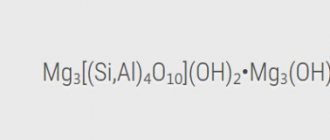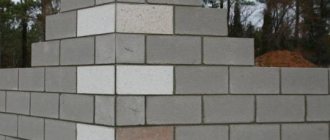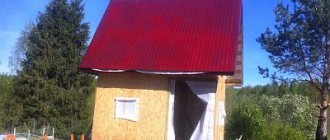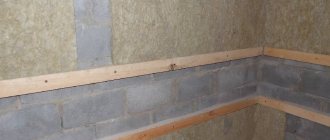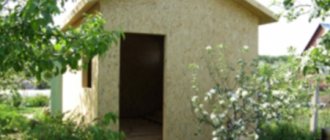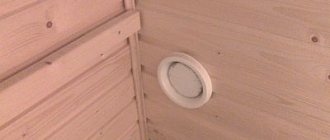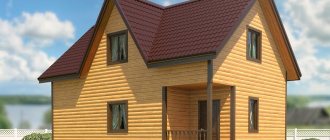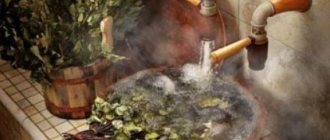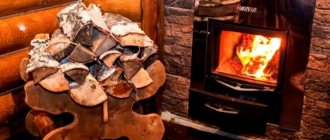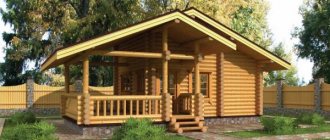The bathhouse is a universal place for rest, relaxation and health improvement. It is known that the bath accelerates blood flow and stagnant processes in the body, promotes the rapid elimination of toxins and waste, rejuvenates the skin, and relieves fatigue. However, the entire effect depends on how well the bathhouse is designed.
The ceiling and walls of the bathhouse must be insulated. This is especially true for the ceiling, because it is under the ceiling that the temperature is highest, and when heated, the air becomes lighter and goes into the roof, into the attic and further into the street. As a result, all the energy and all the heat heat the space around the bathhouse, and this is wasteful. If the bathhouse ceiling is poorly insulated , condensation will appear on it. The appearance of condensation indicates that it is necessary to urgently begin the insulation process. It is best to carry out insulation at the construction stage of the bathhouse, because in this case you will not have to disassemble the structure.
Expanded clay is one of the many materials that is often used for insulation. It consists of fired porous clay granules. The unique thermal insulation properties of expanded clay are due to its cellular structure.
Due to the clay composition, the material is completely environmentally friendly and safe for health.
Types of expanded clay
Expanded clay is represented by round granules with a porous structure made of baked clay.
There are three variations of it:
- Expanded clay sand
. Available in grain sizes from 0.1 to 10 mm. It is used as a filler in mortars and as a backfill when insulating bathhouse ceilings up to 50 mm thick. Price - from 150 rubles per bag. - Expanded clay gravel
. Each granule has a size of 1 to 2 cm. It is used to insulate the entire structure. The cost is about 200 rubles per bag. - Expanded clay-crushed stone
. The fractions have a size of 2-4 cm. They are often mixed with gravel to compact the mixture. Price - about 200 rubles per bag.
A 15-centimeter layer of such material can reduce heat loss by more than 70%.
The main advantages of bathhouses made of expanded clay concrete blocks
• Construction will be inexpensive compared to the use of other building elements. If, for example, we compare turnkey log baths with expanded clay block baths, then the final amount will be three times higher. Moreover, the advantage is that you can lay the blocks yourself, but the log house does not tolerate amateurs. After construction, wood requires the use of impregnations, and expanded clay block requires only finishing;
• Quick construction of the box saves time, and ease of installation saves the family budget on the work of masons;
• The blocks are lightweight (up to 15 kg), so the foundation can be cast at minimal cost without additional reinforcement;
• Expanded clay concrete holds up well to any finishing materials; if a residential building requires the use of high-quality construction technologies, then a simple bathhouse will look great even with the usual plaster;
• Budget building materials have a high level of thermal insulation, so you can build a high-quality steam room at a low cost;
• Today, consumers are increasingly paying attention to such criteria as the environmental friendliness of a product. Thanks to natural ingredients, there will be no chemical fumes or emissions in the steam room, which makes turnkey expanded clay block baths safe for you and your family;
Obviously, the above advantages and affordable price will pleasantly please their owners, despite all the disadvantages of expanded clay concrete blocks.
Average costs for building a bathhouse made of expanded clay block. What does it depend on
To avoid a negative result in the end, construction must begin with cost calculations.
Features of bathhouse thermal insulation with expanded clay
Expanded clay is a natural material, which means it is environmentally friendly. However, environmental friendliness is not the only advantage of this heat insulator. It is very popular when insulating a bath due to its many advantages, such as:
- Cheap
. Compared to most synthetic insulation materials, expanded clay has a low cost. - Durability
. The material does not emit toxic fumes and does not decompose or rot. - High thermal insulation properties
. The thermal conductivity of expanded clay is 0.12 W/mK, which is especially important when used in a bathhouse, where high temperatures are considered the norm. - Fire resistance
. Expanded clay is a heat-resistant material. It does not burn or melt under high temperatures. - Light weight
. This allows it to be used to insulate the ceiling of a bathhouse. - Pest resistance
. Expanded clay is not attractive to insects and rodents. - Versatility of use
. Using expanded clay you can not only insulate, but also level the surface. In addition, it can be used in conjunction with heated floors.
As for the disadvantages of using the material, among them we can highlight the labor-intensive process of thermal insulation.
In addition, when using expanded clay to insulate a bathhouse, it is necessary to pay special attention to vapor and waterproofing. Before proceeding directly to thermal insulation work, calculate the amount of expanded clay that is required to insulate the bathhouse. It is better to purchase it with a reserve, since fragile granules may break during transportation. It is advisable to take material with granules of different sizes. This will allow it to form the most dense backfill and reduce further subsidence.
Pay special attention to vapor and waterproofing. The best option is Izospan or aluminum foil. But it is not recommended to use roofing felt. It is flammable and can become wet under the influence of high temperature and humidity.
Baths made of expanded clay concrete blocks reviews
Reviews from owners about the construction of bathhouses made of expanded clay concrete blocks are not unanimous. There are pros and cons. Every owner dreams of getting not just a “box”, but a real masterpiece. Depending on the type of building (residential, industrial, warehouse), building materials are selected. If you are planning a bathhouse, expanded clay concrete is an excellent choice, but for a house, block structures are not the best alternative option.
- Oleg (Yaroslavl): I always dreamed of building a bathhouse on my site. When I approached the issue seriously, I was at a loss at the variety of alternatives on the construction market. A friend advised me to pay attention to expanded clay concrete blocks; according to him, they are not only affordable, but also high-quality building materials. This was my first independent construction. Despite various opinions about the material, I, like many other self-taught people, chose expanded clay concrete blocks for my bathhouse.
- Alex (Voronezh): My wife and I practically live at the dacha, the plot allows us to build a bathhouse, so we didn’t think twice about it, but began to develop a project and come up with a layout. When it came to choosing the material, and, of course, calculating the cost, I was confused. I started reading forums, consulted with professionals who build turnkey bathhouses and, despite numerous excuses, still decided to use expanded clay block. After all, I am the happy owner of a luxurious home bath.
- Vadim (Samara): My granddaughter is an athlete, so she needs regular baths. I am against public steam rooms, I prefer to have my own, but since my granddaughter needs it, I decided to build one. I calculated the cost, it’s not a cheap pleasure, but expanded clay concrete for building a bathhouse is not only a budget-friendly, but also a completely worthy alternative. When I talked about my idea at work, it turned out that there were more bathhouses built from expanded clay concrete blocks than I could have imagined. This gave me even more confidence and confidence in the right choice. We built a bathhouse with the whole family and don’t regret it, the reviews about the expanded clay block are only the most positive.
- Volodya (Krasnodar): My grandmother left me a plot; I’m not a gardener, so I won’t grow anything. Instead, I decided to slightly modernize my inheritance; there is a residential building there, and I decided to build a bathhouse so that I can often come and relax with friends. I chose blocks to build quickly. There were good reviews about foam blocks, but the cost did not please me, then I found out that a bathhouse made from expanded clay concrete blocks is no worse, and the price is much lower. My steam room is ready, I see only advantages for myself, I recommend it to everyone!
Despite negative reviews from builders and specialists about expanded clay concrete blocks, more and more self-taught people are using this material in home construction of baths. A small one-story house, a modest garage or a country bathhouse are the most popular objects made from budget building materials.
Generalization: advantages and disadvantages of expanded clay concrete baths. In what cases should you use expanded clay concrete block to build a bathhouse?
When choosing expanded clay block for a bathhouse, you should be prepared for its features. In addition, despite all the advantages, the material has its disadvantages.
Bathhouse insulation technology with expanded clay
The porous structure of the heat insulator granules significantly increases its thermal insulation characteristics. In order for energy saving to be as effective as possible, you need to correctly select not only the main insulation, but also other insulators.
Instructions for insulating a bathhouse ceiling with expanded clay
When calculating the amount of material for thermal insulation of the ceiling in the bathhouse, keep in mind that the layer should be 20 cm or more. Insulation is carried out from the attic side.
If desired, you can mix expanded clay in the form of sand and gravel. This will make the backfill as dense as possible. We carry out the work in the following sequence:
- We overlap the vapor barrier membrane by 12-15 cm. If aluminum foil is used, the reflective surface should be located inside the room.
- Carefully seal the joints with metallized tape. If you decide to use roofing felt, seal the joints with rubber-bitumen mastic.
- We vapor barrier the rafters and chimney above the level of the future backfill. We attach the material using masking tape or a construction stapler.
- Make a layer of crushed clay about 10 cm and compact it thoroughly. This is necessary for additional thermal insulation.
- We fill in the expanded clay and level it over the surface.
- Fill the surface with cement-sand screed.
If you plan to continue using the attic, you can lay a floorboard on top across the beams.
Features of floor insulation in a bathhouse with expanded clay
The thermal insulation of the flooring in the steam room must be taken care of at the stage of its construction or major repairs.
It is also important to take into account the maximum permissible load when calculating the layer thickness. During the process we follow these instructions:
- We spread the waterproofing bitumen material on the concrete covering with an overlap of 10 cm. The overlap on the walls should be about 15 cm.
- Using alabaster, we attach “beacons” around the perimeter of the floor, which will show the thickness and evenness of the layer.
- When filling between wooden joists, care must be taken to pre-treat them with antiseptic compounds.
- We fill in expanded clay with a height of 15-20 cm. In this case, it is also better to use a mixture of fractions of different sizes.
- We water the backfill with “cement laitance” (a mixture of cement, water and primer). This is necessary so that the individual granules “adhere” to each other.
- A day later, we install a metal reinforcing mesh on top to give the structure additional rigidity and strength.
- Fill it with a cement-sand screed about 3 cm thick and wait for it to dry completely. Please note that the drying of the screed can be determined with a glass jar. It must be placed with its neck to the floor. If it does not fog up, then you can begin further work.
- We fix the waterproofing material.
- We install finished floors. The final design strength of such a flooring is achieved only after a month.
If you decide to insulate with expanded clay over the ground in a bathhouse, then its layer will be significantly thicker (about 30-35 cm), which will raise the height of the floor.
This must be taken into account at the stage of designing the height of the walls of the bathhouse. The use of expanded clay in concrete is possible, but not so effective. Therefore, this method is not suitable for thermal insulation of a steam room.
Specifics of insulating bath walls with expanded clay
Bulk materials can only be used for thermal insulation of brick walls of buildings.
This process must be thought through during construction. A brick bathhouse is insulated with expanded clay in the following order:
- We are building the first outer wall using brickwork, half a brick thick.
- Inside, at a distance of 35 cm, we lay out a second wall of the same thickness in parallel.
- We install jumpers inside every 10 cm.
- We fill the expanded clay with a layer of 20-40 cm and compact it thoroughly.
- We pour the cement mixture to “set” the individual fractions.
- We repeat the process to the top of the structure.
This method is used extremely rarely due to the labor intensity of the work and the increased load on the foundation.
However, if you decide to insulate the walls of the steam room in this way, then pay special attention to the hydro- and vapor barrier of the walls. How to insulate a bathhouse with expanded clay - watch the video: Effective thermal insulation of a bathhouse with expanded clay can be done with your own hands, if you take into account all the nuances of this process. The material is hygroscopic, and therefore the insulation of surfaces must also be carried out reliably. By adhering to general recommendations and instructions, you can easily insulate a steam room with an environmentally friendly and durable heat insulator.
Varieties
Under the general name “expanded clay” you can find several types of bulk insulation materials that have very different characteristics. Externally, they are almost identical - brownish granules of oval and round shapes, very light and porous. However, the main thing – the efficiency of the insulation – will depend on the size and density of the granules. Therefore, you need to select the appropriate type in advance, choosing from three options:
- Sand is small particles, up to five millimeters in size. They are perfect for filling uneven surfaces due to their fine grain size.
- Gravel - the optimal particle size from five millimeters to four centimeters allows the particles to fill all the necessary volumes well and retain heat effectively.
- Crushed stone is the third type of this bulk heat insulator. The particles have an irregular shape and dimensions from two to five or even more centimeters. It is obtained by crushing large pieces and is slightly inferior in properties to other varieties. However, it is excellent for filling large volumes.
There are no ideal variations. Typically, a comprehensive solution is used, consisting of backfilling two, and sometimes all three, types of fractions. This ensures that the material works as efficiently as possible. For example, when insulating a floor with expanded clay over the ground in a bathhouse, you can fill the base with the largest fraction, and then create a layer of smaller backfill.
Tips on how to insulate a floor with expanded clay
- To achieve a better thermal insulation effect, expanded clay is poured separately in dry form, without mixing with concrete.
- The thickness is calculated based on the load on the floor, and it should not be less than 15 cm.
- Beacons are best secured with alabaster mortar; it has a high hardening rate.
- Sometimes, to achieve additional strength and to avoid displacement of the granules, it is additionally reinforced with a metal screed.
- Expanded clay granules of different sizes are used to improve adhesion.
- You can walk on the new floor after a few days, but maximum strength is achieved only after a month. Therefore, if possible, it is better to wait this period.
- A film is spread under the expanded clay; it is best not to spare it, since the excess is easy to remove. If it is not a solid piece, then the joints are carefully glued together with tape.
In the previous parts of the article, the importance of waterproofing before the backfill layer is repeatedly mentioned. Currently, a large number of materials are used in construction.
- Material with bitumen impregnation.
- Mastic with a bitumen base.
- Polymer mixtures.
- A mixture of cement with polymer structures.
- Hydrobarriers coated with rubber.
- Thick polyethylene film.
Film is the most inexpensive and widespread material, but at the same time it has very low vapor permeability, unlike other materials. Experts believe that the best option is bitumen-based materials, for example, roofing felt. Durability, good vapor and waterproofing properties make it very popular.
But the best option is silica gel. It consists of dried gel granules, which are obtained from silicic acids. Silica gel perfectly absorbs vapors and moisture and negates the disadvantages of this plan for expanded clay. But this material is used only for dry backfilling and moisture should not be allowed to get on it.
Options for using silica gel.
- A mixture of silica gel with expanded clay of different fractions in a ratio of 1 to 10.
- Or, first, a layer of silica gel 1 cm thick is applied, and expanded clay is poured on top.
But this method has not gained much popularity in construction for a number of reasons. Silica gel dust contains substances harmful to the human body; it contains cobalt chloride. In addition, silica gel is explosive and fire hazardous.
Thus, this material has acquired a dubious reputation and its use is still debated. On the one hand, it retains moisture and vapor well, but on the other hand, it is dangerous to life. But some experts believe that under certain conditions of laying silica gel, all its dangerous properties can be eliminated. Currently, the use of this material is determined by the desire to bring something new to construction, and sometimes simply due to certain factors.
In conclusion, it should be recalled that expanded clay is an inexpensive material that is very easy to install and has a number of useful properties. It can be used as insulation for walls, ceilings and floors. It is difficult to fill in as wall insulation, but a house with expanded clay insulated walls is a bastion of heat. In addition, this material has good ventilation properties. The disadvantage of expanded clay is its low moisture resistance and fragility during installation.
Laying technology
The principle of floor insulation with expanded clay is to arrange a heat-insulating layer into a prepared frame. First, a rigid base is prepared. If the material is poured directly onto the ground, it must be compacted well. Lay a row of waterproofing.
The next stage is the assembly of the frame, consisting of ordinary wide slats, reinforced with transverse bars.
In the case of a large insulation perimeter, it is recommended to divide the structure into several fragments.
The last thing is pouring the expanded clay mixture and fixing the fastening boards to the frame.
If the work is carried out under a screed, then the filled expanded clay is filled with a cement composition.
Usage
Most often, expanded clay is used specifically for the improvement of floor coverings, as insulation. It is poured in a small even layer, so that there are no gaps anywhere through which cold air could penetrate. And then this layer can be filled with concrete or covered with wood. Expanded clay is also used as wall insulation, but this is an infrequent practice, since the process is quite labor-intensive, but, on the other hand, a building with walls insulated in this way practically does not cool at all in winter. This material is also used for insulating the ceiling and the entire roof as a whole.
However, despite the positive properties, you must remember to do everything correctly, otherwise the efforts will not be worth anything. But as was said, expanded clay is very easy to install, which makes it attractive to use even by inexperienced people.
